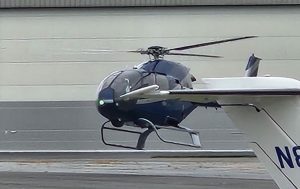The Evolution of Network Cabling in Airports
Airports are complex infrastructures where safety, efficiency, and passenger experience depend heavily on technology. From flight operations to passenger services, network cabling forms the invisible backbone that keeps airport systems running smoothly. Over the years, the demands on airport networks have grown exponentially, prompting significant changes in network cabling standards and implementations.
Early Days: Basic Cabling for Basic Needs
In the early days of commercial aviation, airports required relatively simple communication systems. Telephone lines and basic data connections were sufficient to coordinate flight schedules and communicate with airlines. During this period, network cabling primarily consisted of copper wires, often unshielded, connecting control rooms, ticketing counters, and administrative offices. While functional, these cabling systems lacked the capacity and reliability needed for growing passenger numbers and emerging digital technologies.
The Rise of Digital Systems
By the 1980s and 1990s, airports began integrating more sophisticated digital systems, including computer-based flight information displays and early baggage tracking systems. This shift required upgrades in network cabling to support higher data throughput and more reliable connections. Structured cabling became a priority, allowing multiple systems to share the same cabling infrastructure efficiently. With these improvements, airports could begin offering real-time flight information to passengers and more reliable communication between airport operations and airlines.
Transition to Fiber Optics
The late 1990s and early 2000s saw the adoption of fiber optic network cabling in airports. Fiber optics offered unmatched bandwidth, faster speeds, and greater resistance to interference compared to traditional copper cables. Airports began replacing older copper cabling in critical areas such as air traffic control, security monitoring, and data centers. This transition was essential to support the growing demands of automated systems, surveillance cameras, and increasingly sophisticated check-in and baggage handling processes.

Network Cabling at Airports
Modern Airport Networks
Today’s airports are highly digitized hubs where thousands of devices require seamless connectivity. Modern network cabling in airports supports a vast array of systems: wireless access points, self-service kiosks, digital signage, security sensors, and IoT-enabled devices. Advanced fiber optic and Cat6a cabling solutions are standard, providing high-speed connectivity that ensures minimal downtime and robust performance. Network designers also prioritize redundancy and fault tolerance, meaning multiple paths for data transmission are built into the cabling system to prevent failures.
Security and Safety Considerations
With the rise of digital networks, security has become a crucial factor in airport network cabling. Sensitive data, including passenger information and operational details, must be protected from cyber threats. Modern cabling installations incorporate secure routing, protective conduits, and strict adherence to industry standards to prevent unauthorized access. Additionally, cabling in critical areas, such as air traffic control and runway operations, follows rigorous safety guidelines to prevent physical damage that could disrupt operations.

Network Cabling Techs
Integration with Wireless Networks
While wired network cabling remains the backbone of airport networks, wireless technologies have become increasingly important. Wi-Fi networks, mobile boarding pass scanners, and IoT devices rely on a strong wired infrastructure for connectivity and stability. Modern airports deploy a hybrid approach: fiber and copper cabling provide reliable backhaul for wireless access points, while wireless networks enhance flexibility and convenience for passengers and staff.
Sustainability and Future Trends
Airports are also adopting more sustainable practices in network cabling. Recyclable cabling materials, energy-efficient network equipment, and intelligent cabling management systems reduce environmental impact while improving operational efficiency. Looking forward, emerging technologies such as 5G, IoT expansion, and AI-driven airport operations will continue to drive innovations in network cabling, ensuring that airports remain connected, secure, and capable of handling increasing passenger and data demands.
Conclusion
The evolution of network cabling in airports reflects the broader technological advances in aviation and digital infrastructure. From simple copper wires to advanced fiber optic systems, network cabling has transformed airport operations, security, and passenger experience. By investing in modern, reliable, and scalable cabling solutions, airports ensure they can meet the demands of today and adapt to the innovations of tomorrow.
Whether it’s supporting thousands of IoT devices, enabling real-time flight information, or enhancing security protocols, network cabling remains the invisible but essential foundation of modern airport operations.
For help with any project or installation in the New Jersey or Philadelphia area please call us at 877-832-1206.
For more ideas please visit – https://www.bridgecable.com/services/
For more information and educational content please visit:
https://www.youtube.com/@BridgeCable
Copyright © 2025 Bridge Cable. All rights reserved.
Mailing: 2745 Terwood Road, Willow Grove, PA 19090
Warehouse: 2066 W. Hunting Park Ave, STE 308, Philadelphia, PA 19140
Related Posts

How to Keep Your Network Cabling Running Smoothly as the Seasons Change

The Importance of Customer Service in Network Cabling Companies

